23 Famous European Apple Varieties: A Sweet Continental Guide
European apple varieties represent a fascinating world of crisp, delectable fruit that has captivated taste buds for generations.
Orchards across the continent showcase remarkable diversity in these beloved pomaceous delights.
Agricultural traditions have carefully cultivated unique characteristics that distinguish European apples from global counterparts.
The genetic heritage of these fruits tells complex stories of regional innovation and agricultural expertise.
Subtle nuances in flavor, texture, and appearance reflect generations of meticulous cultivation and deep cultural connections.
Farmers and horticulturists have passionately preserved and developed extraordinary apple cultivars with remarkable precision.
Each variety carries its own distinct personality, shaped by soil, climate, and generations of agricultural wisdom.
You can learn more about these 23 remarkable European apple varieties that will transform your understanding of this beloved fruit:
European Apple Variety Types for Every Season
Crisp, sweet, tart, or spicy, Europe’s apple varieties are as varied as its countries. Find your new favorite for eating, baking, or turning into cider.
Mila Zagoras Piliou
Mila Zagoras Piliou are premium Starking Delicious apples grown exclusively in specific mountain regions of Greece with exceptional quality and unique flavor profiles.
Mountain terrains of Zagora, Makrirahi, and Pouriou provide perfect cultivation conditions for these remarkable fruits.
Agricultural cooperatives began systematic apple production in the 1960s using traditional techniques and careful monitoring.
High-altitude landscapes contribute to the apples' distinctive characteristics and intense taste.
Specialized farmers meticulously select and hand-harvest each apple after rigorous ripeness checks.
Modern storage facilities ensure optimal preservation and quality maintenance.
These apples represent a significant agricultural achievement for Greek mountain communities.
Strict quality assessment protocols guarantee premium standard for consumers seeking exceptional fruit experiences.
Mila Delicious Pilafa Tripoleos
Tripoli Delicious Pilafa apples emerge as a unique fruit variety with roots tracing back to 1920s Arcadia, Greece.
Ilias Andreou Pilafas introduced these distinctive apples after bringing seeds from America to his personal garden.
Their remarkable characteristic includes a white, juicy flesh with a firm texture and an unusual banana-like fragrance.
Slightly acidic in taste, these apples feature a green-yellow skin decorated with dark brown spots.
Agricultural records highlight their special status among regional apple varieties.
Local farmers have carefully maintained these apple trees for generations.
Mediterranean growing conditions contribute to their distinctive flavor profile.
Generations of Greek families have enjoyed these rare and flavorful apples.
Maca Bravo De Esmolfe
Bravo apples originate from Portugal's central regions with an extraordinary ability to maintain freshness for extended periods.
These distinctive fruits grow in districts like Coimbra and Viseu after trees mature for three to four years.
White peels marked with subtle reddish spots characterize their unique appearance.
Sweet and juicy inner flesh provides a delightful raw eating experience.
Portuguese farmers carefully cultivate these trees in specific mountainous territories.
Intense fragrance makes Bravo apples exceptional for natural room perfuming.
Dried versions work perfectly for scenting drawers and small interior spaces.
Harvesting occurs in select districts including Guarda and Castelo Branco, ensuring premium quality fruit production.
Firiki Piliou
Firiki apples are distinctive small mountain fruits native to Greece's Pelion region, distinguished by their unique elongated shape and delicate yellowish-green skin with reddish sun-exposed patches.
Originating from Black Sea territories in the 19th century, these compact Malus domestica Borkh apples thrive in specific mountain villages like Portaria, Makrinitsa, and Zagora.
Farmers value Firiki for its resilience against sun damage due to its petite size.
Their fragrant nature and exceptional coloration make them prized among local agricultural communities.
Careful cultivation in elevated Pelion landscapes ensures these apples maintain their characteristic appearance and flavor profile.
Smaller than standard apple varieties, Firiki represents a cherished agricultural heritage of northwestern Greece.
Mountain microclimates contribute to their unique sensory qualities.
Regional traditions celebrate these compact, sun-kissed fruits as a special agricultural treasure.
Calville Blanc Apples
Calville Blanc apples reign supreme in French dessert orchards with exceptional vitamin C levels surpassing oranges and distinctive banana-like aromas.
French growers prize these pale yellow apples for their uniquely tart flavor profile that intensifies during storage from late October through December.
Kitchen experts frequently transform these apples into complex sauces, traditional ciders, rustic pies, and tangy vinegars.
Harvesters recognize the fruit's tender flesh and delicate skin as hallmarks of its premium quality.
Stored apples develop deeper color and more nuanced taste characteristics over time.
Seasonal variations influence each harvest's specific flavor intensity.
European orchards cultivate these apples with meticulous agricultural techniques.
Regional French markets showcase these prized apples as autumn culinary treasures.
Opal Apples
Opal apples are a unique golden-yellow Czech variety bred in Prague during 1999 by crossing Golden Delicious and Topaz apple types.
Distinctive for their non-browning flesh, these medium to large round apples offer a rare crisp texture with sweet and tangy flavors hinting at banana, pear, and coconut.
Their lemon-yellow skin gleams attractively, making them visually appealing for fresh snacking and culinary uses.
Chefs and home cooks appreciate Opal apples for salads, pies, and tarts due to their ability to maintain color when sliced.
Late winter and spring mark their peak availability, providing consumers a refreshing fruit option.
Harvested carefully to preserve their delicate nature, these apples represent an innovative breeding achievement.
Their unique characteristics set them apart from traditional apple varieties.
Scientific breeding techniques have produced this remarkable fruit with exceptional taste and visual qualities.
Belle De Boskoop Apples
Belle de Boskoop apples burst with intense tartness and character, originating near Amsterdam in the 1850s as a distinctive russet-covered variety.
Dutch orchards carefully cultivate these pale yellow-green apples known for their firm, crisp texture and complex flavor profile.
Growers recommend Belle de Boskoop for baking extraordinary pies and creating rich, concentrated apple butter.
These late-season apples initially strike you with sharp acidic notes that gradually mellow and sweeten after harvest.
Unique russeting covers their skin, giving them a rugged, textured appearance different from smoother apple varieties.
You can expect a slightly dry flesh that maintains excellent structural integrity when cooked.
European bakers prize these apples for their ability to hold shape during baking.
Harvest typically occurs late in the apple season, ensuring maximum flavor development.
Elstar Apples
Elstar apples burst with sweet-honey flavors and crisp texture from Dutch breeding traditions, originating as a cross between Golden Delicious and Ingrid Marie varieties in the 1950s.
Medium-sized fruits display attractive red skin with yellow blushes, making them visually appealing and versatile for culinary uses.
White flesh provides a satisfying crunch with balanced sweetness and subtle acidic undertones.
Harvested from late fall to mid-winter, these apples excel in dessert preparations like homemade apple sauce.
Cooking slightly softens their initial tartness, enhancing their natural sugars.
Bakers and home cooks prize Elstar apples for their consistent quality and reliable flavor profile.
Netherlands remains the primary producer of this popular apple variety.
Grocery stores and farmers markets commonly stock these distinctive fruits during their seasonal availability.
Topaz Apples
Topaz apples are crisp Czech Republic fruits celebrated for their exceptional sweet-tart flavor profile developed through strategic cross-breeding between Rubin and Vanda apple varieties.
Research reveals these mid-fall to winter fruits feature creamy white flesh with a firm texture that mellows beautifully during storage.
You can enjoy Topaz apples fresh, raw in salads, or paired with cheese and cream-based dips.
Versatile preparation methods include boiling, roasting, and baking.
Agricultural experts from the Institute of Experimental Botany carefully cultivated this unique apple variety.
Moderate sweetness distinguishes Topaz from other apple types.
Cold storage enhances its flavor complexity.
Scientists designed these apples to maximize taste and texture balance.
Cox’S Orange Pippin Apples
Cox's Orange Pippin apples reign supreme as a legendary British dessert apple first cultivated in 1830 by Richard Cox near London.
Prized for their complex flavor profile, these apples blend subtle sweetness with a hint of astringency and caramelized undertones.
Red-orange skin covers a crisp, juicy flesh that delivers an intensely aromatic experience.
Gourmet orchardists consider this variety challenging to grow due to its sensitivity to climate and disease.
Maritime cool conditions help these apples thrive best between November and April.
Connoisseurs rate Cox's Orange Pippin as one of the world's most sophisticated apple varieties.
Their unique taste emerges from carefully balanced sugar and acid levels.
These apples excel as standalone dessert fruits or in sophisticated culinary preparations.
Pomme Du Limousin
Pomme du Limousin are crisp, flavorful apples from France's Limousin region, distinguished by their golden-green skin and exceptional taste balance.
Golden delicious variety trees produce these premium fruits with a unique regional character.
French farmers carefully cultivate these apples in specific microclimates, ensuring optimal growing conditions.
European agricultural standards protect their authenticity and quality through strict geographic designation.
Natural orchard environments contribute to their firm, juicy texture and clean white flesh.
Each apple offers a perfect blend of sweet and tangy notes that delight fresh eating preferences.
Harvested during late summer and early autumn, these apples represent a treasured agricultural tradition.
Their smooth skin and refreshing flavor make them popular for direct consumption and culinary applications.
Juliet Apples
Juliet apples burst with exceptional French heritage, offering a perfectly balanced sweet-tart flavor profile prized by fruit enthusiasts worldwide.
Medium-sized fruits showcase a stunning red skin overlaying a yellow-green background, creating visual appeal for orchard and market displays.
Crisp and juicy flesh provides a refreshing eating experience that sets these apples apart from other varieties.
Originating in France, Juliet apples represent careful agricultural breeding designed to maximize taste and texture.
Growers appreciate their robust growing characteristics and reliable harvest potential.
Fruit lovers enjoy their versatility in both raw consumption and culinary applications.
Orchards across Europe cultivate these remarkable apples for commercial and personal use.
Exceptional quality and balanced flavor make Juliet apples a standout choice for discerning consumers seeking premium fruit experiences.
Red Prince Apples
Red Prince apples emerge as a remarkable Dutch hybrid combining Jonathan and Golden Delicious genetics, producing exceptionally large fruits with deep crimson coloration.
Harvested in Weert, Netherlands, these apples develop remarkable complexity through strategic cellaring, transforming their initial sweetness into a nuanced flavor profile.
Their crisp texture and juicy interior make them ideal for fresh eating and culinary applications.
Red Prince apples ripen with striking deep red skin that signals their premium quality.
Growers carefully nurture these fruits to ensure maximum flavor development.
Cellaring allows their taste to mature, introducing subtle tangy undertones alongside natural sweetness.
Agricultural experts consider this variety a significant advancement in apple breeding.
Fruit enthusiasts prize Red Prince apples for their balanced taste and impressive visual appeal.
Maca Riscadinha De Palmela
Portuguese Palmela apples emerge as distinctive fruit treasures renowned for their intense aromatic profile and unique oblong shape.
Regional farmers have cultivated these remarkable apples in Portugal's Palmela municipality since the 19th century, developing a proud agricultural tradition.
Their bright exterior features recognizable reddish spots dispersed across smooth skin, creating visual appeal that distinguishes them from standard apple varieties.
Small orchards carefully nurture these apples using traditional growing methods passed through generations.
Each apple boasts a complex fragrance that signals superior quality and flavor complexity.
Portuguese agricultural experts consider these apples exceptional representatives of regional fruit production.
Palmela's microclimate contributes significantly to the fruit's distinctive characteristics.
Agricultural sustainability remains central to maintaining these special apple varieties for future generations.
Armagh Bramley Apples
Armagh Bramley apples reign supreme in Northern Ireland's culinary landscape as a premium cooking apple prized for its unique characteristics.
These large apples feature distinctive white flesh and firm green skin that transform dramatically when heated.
Farmers in County Armagh carefully cultivate these apples exclusively for cooking purposes.
Bramley apples deliver an intense, sharp flavor profile with high acidity that makes them perfect for sweet and savory recipes.
Chefs and home cooks value their exceptional moisture content and ability to break down smoothly during cooking.
Traditional Irish dishes like apple tarts, pies, and sauces frequently showcase these exceptional apples.
Northern Ireland protects their Bramley apple production through geographical indication status.
Commercial production of these special apples centers in the orchards of County Armagh, where generations of farmers have mastered their cultivation.
Discovery Apples
Discovery apples burst with a unique strawberry-infused sweetness and represent a classic English fruit variety developed through careful cross-breeding.
Worcester Pearmain and Beauty of Bath parent varieties contributed to this distinctive apple's genetic makeup.
Pink-red skin covers a pale green-yellow background, creating an attractive exterior appearance.
White flesh provides a crisp and juicy texture that apple enthusiasts enjoy.
Harvested in early autumn, these apples offer a tangy flavor profile with balanced sweetness.
Grown primarily in United Kingdom orchards, Discovery apples reach peak ripeness from late August through September.
Small to medium in size, they work well for fresh eating and light cooking applications.
British gardeners and fruit growers consider this variety a reliable and flavorful seasonal selection.
Maca De Portalegre
Esmolfe apples are prized Portuguese heirloom fruits originating from careful cross-breeding between Camoesa and Melapia varietals in Portugal's Portalegre region.
Farmers cultivate these unique apples using traditional methods that preserve their distinctive characteristics and quality.
Trees in this region produce fruit every alternate year, ensuring concentrated flavor and robust growth cycles.
Specialized wooden baskets with soft linings protect each apple during delicate hand-harvesting processes.
Workers carefully select and gather each apple to maintain its pristine condition and prevent bruising.
Rich regional heritage influences the cultivation techniques passed down through generations of local farmers.
Unique growing conditions in Upper Alentejo contribute to the apples' exceptional taste and texture.
Generations of agricultural expertise have sustained this remarkable apple variety through careful cultivation and preservation techniques.
Grenadier Apples
Grenadier apples are a classic English cooking variety renowned for their exceptional tartness and soft, quick-breaking flesh perfect for baking.
Developed in Buckinghamshire during the 19th century, these distinctively lumpy apples feature a pale green skin that transitions to yellow-green when ripe in mid-August.
Gardeners prize Grenadiers for their early harvest and intense acidic flavor ideal for pies, sauces, and traditional English desserts.
Kitchen gardeners appreciate their reliability and robust growing characteristics across various British climates.
Visually unappealing with pronounced ribbing and irregular shapes, these apples compensate through remarkable culinary performance.
Commercial orchards rarely cultivate Grenadiers due to their less-than-perfect appearance.
Despite limited modern popularity, heritage apple enthusiasts continue maintaining and propagating this historic variety.
Small-scale growers and historic garden preservationists keep Grenadier apples alive through dedicated cultivation efforts.
Blenheim Orange Apples
Blenheim Orange apples showcase England's rich heritage of exceptional fruit cultivation, originating from Oxfordshire's historic Blenheim Park in the mid-18th century.
These medium to large apples feature a distinctive orange-red skin adorned with subtle red stripes over a golden or greenish yellow background.
Their rounded shape includes gentle ribs and a light russet covering, giving them a unique visual character.
Orchard growers prize these apples for their exceptional flavor and versatile culinary applications.
Blenheim Orange trees produce fruit with a crisp texture and complex taste profile that balances sweetness with subtle tartness.
Garden enthusiasts appreciate their robust growth and reliable fruit production.
Harvested in late autumn, these apples excel in cooking, particularly for pies and desserts.
British fruit collectors consider Blenheim Orange a classic heritage variety with deep agricultural significance.
Knobby Russet Apples
Knobby Russet apples stand out as England's most uniquely ugly fruit, sporting an irregular, potato-like shape covered in bumps and knobs that challenge traditional apple aesthetics.
These yellow-green skinned fruits boast a rough exterior with asymmetrical contours that immediately catch you eye.
Farmers harvest these apples from mid-fall through late winter, making them a seasonal specialty.
Their dense, fine-textured flesh carries sweet and rich flavors with subtle citrus and spice undertones.
Despite their unconventional appearance, Knobby Russet apples excel in cider production.
Experienced orchardists value these apples for their distinctive character and robust taste profile.
British apple enthusiasts consider them a prized variety that defies conventional beauty standards.
Traditional cider makers particularly appreciate their complex flavor potential.
Karmijn De Sonnaville
Karmijn de Sonnaville apples emerge as a distinctive Dutch variety born from skilled agricultural breeding in 1949, featuring an exceptional cross between Cox's Orange Pippin and Jonathan.
Developed by Piet de Sonnaville in Wageningen, these apples boast a unique large size with rough yellowish-green skin marked by striking orange or brown-red flushes.
Grown primarily in Netherlands, the apples offer a complex flavor profile that balances sweet and tart notes.
Farmers value these apples for their robust growing characteristics and resistance to common agricultural challenges.
Harvest typically occurs in late autumn when the fruit reaches peak ripeness.
Home gardeners appreciate their versatility in cooking and fresh eating.
Their unusual coloration makes them stand out among standard apple varieties.
Specialized orchards continue cultivating this remarkable Dutch apple variety with dedicated preservation efforts.
Kingston Black Apples
Kingston Black apples dominate English cider production with their distinctive bittersweet characteristics.
West Country farmers exclusively grow these unpalatable apples for their exceptional juice quality.
English cider makers prize this variety for its unique flavor profile and robust juice composition.
Originating in Somerset, this apple variety transforms mediocre into remarkable alcoholic beverages.
Farmers carefully cultivate Kingston Black trees in specific regional orchards.
Agricultural experts consider this apple a premium cider ingredient.
Its bitter juice creates complex and balanced cider flavors.
Regional traditions have long celebrated this specialized apple variety.
Dabinett Apples
Dabinett apples emerge as exceptional cider-making fruit from Somerset, England, with a distinctive bittersweet profile that transforms traditional cider production.
Somerset growers cherish this medium-sized yellow-green apple variety marked by subtle red blushes and white flesh with light green undertones.
Farmers value Dabinett for its strong flavor and robust sugar content that enables single-variety cider creation.
Developed through careful agricultural selection, these apples contribute complex taste characteristics to cider brewing.
Agricultural experts recognize Dabinett as a premium apple strain with significant regional importance.
Somerset's apple orchards continue cultivating this unique variety for specialized cider production.
Brewers prize Dabinett for its intense flavor profile and balanced sugar levels.
Regional cider makers consider Dabinett an essential ingredient in creating high-quality apple beverages.
What Role Do Apples Play in European Food Traditions?
Apples have been a cornerstone of European food culture for centuries, celebrated both for their versatility and symbolic significance.
They appear in a wide range of culinary uses - from fresh eating and baking to cider making and savory dishes. Apples are central to traditional desserts like French tarte Tatin, English apple pie, and German Apfelstrudel.
Beyond sweets, apples often accompany meats, especially pork, adding a sweet-tart contrast that balances rich flavors. Culturally, apples symbolize health and fertility, featuring in folklore, festivals, and rituals across Europe.
How Do Storage Methods Impact Apple Taste and Use Through the Winter?
Proper storage is essential for preserving apples’ flavor, texture, and nutritional value through the winter months.
Traditional methods include cool, dark cellars or root cellars with high humidity, which slow down ripening and prevent shriveling.
Modern controlled-atmosphere storage regulates oxygen and carbon dioxide levels to extend freshness even further.
However, storage can alter apple taste: over time, some varieties may lose their crispness and become mealy or soft, while sugars may concentrate, making the fruit taste sweeter but sometimes less tangy.
These changes influence how apples are best used - fresh, crisp apples are favored for eating raw or in salads, while softer, stored apples are often better suited for cooking and baking, where texture is less critical.

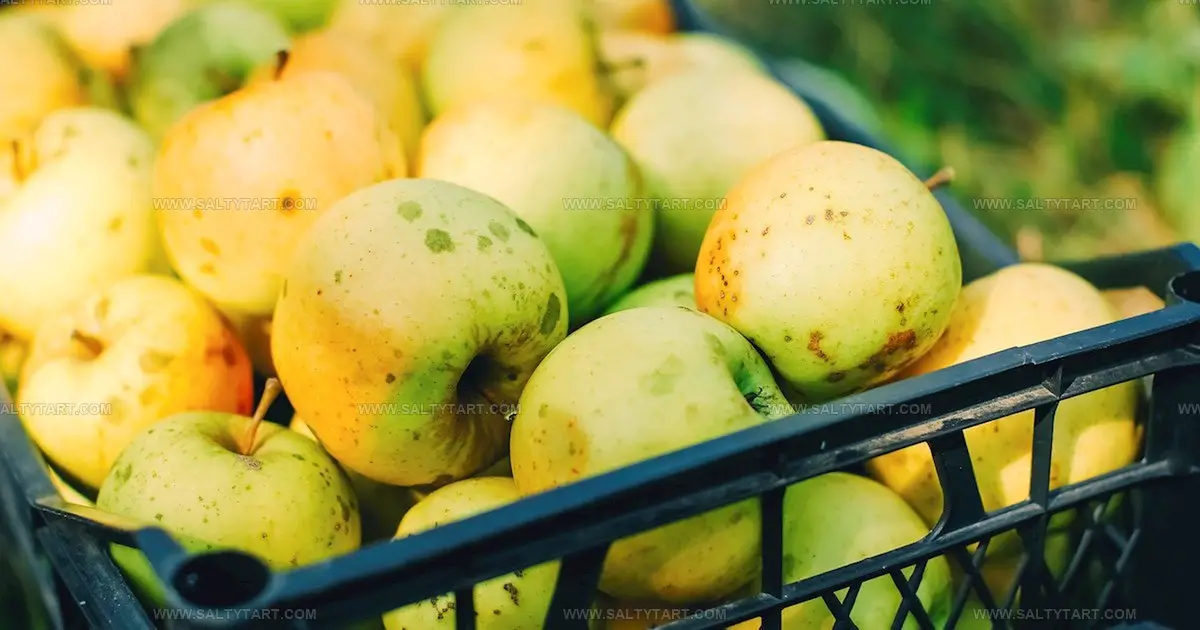
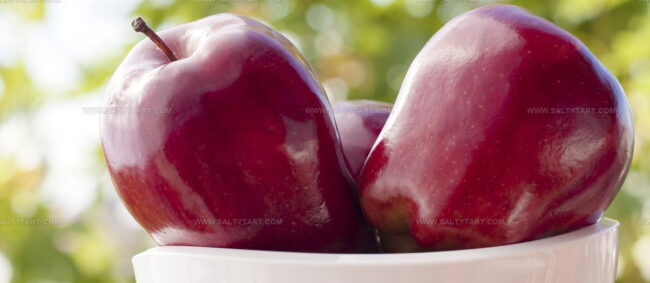
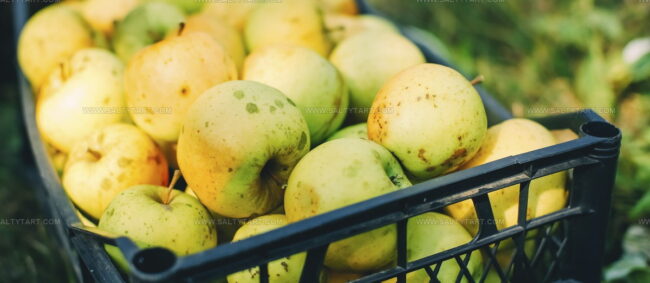
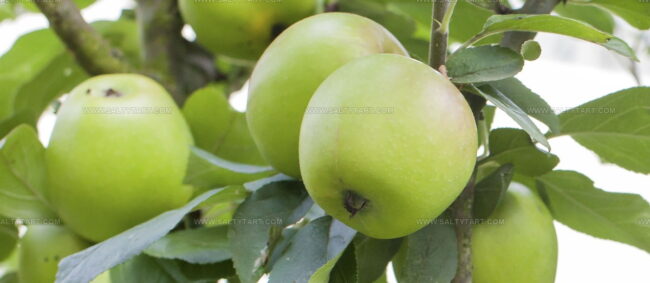
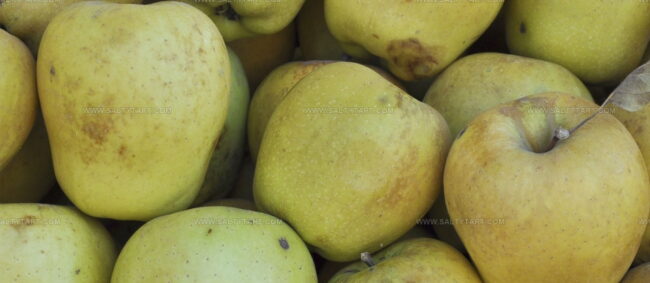
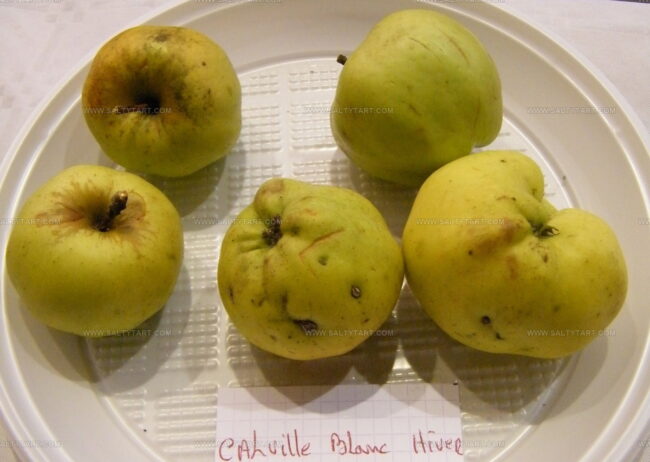
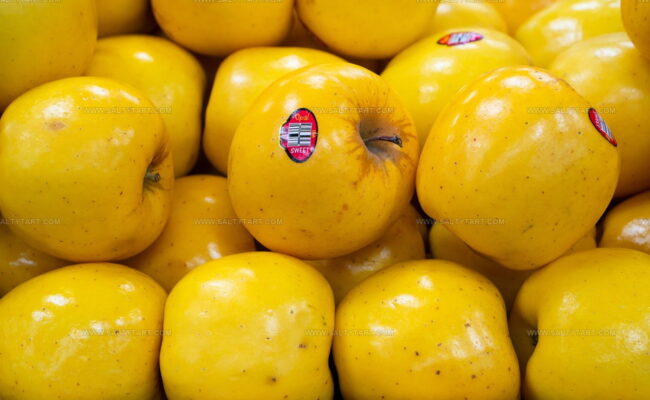
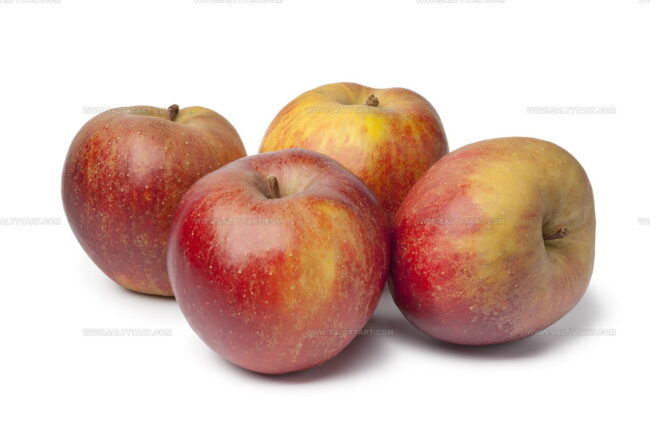
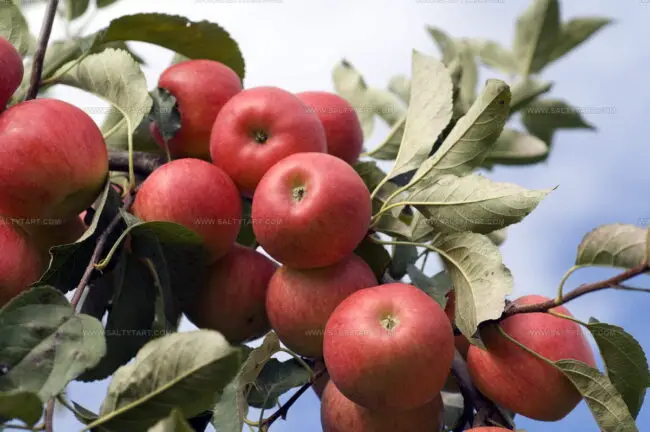
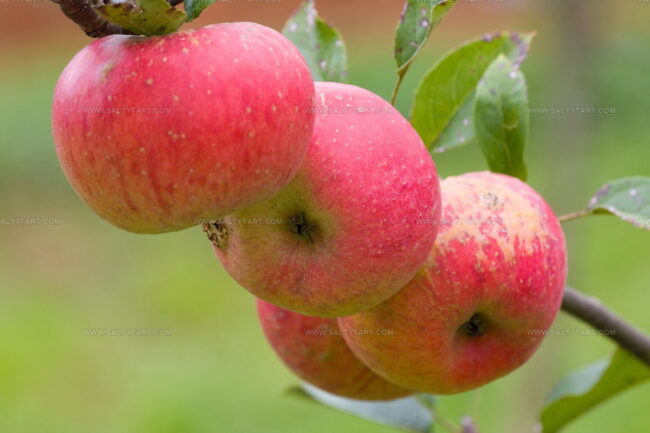

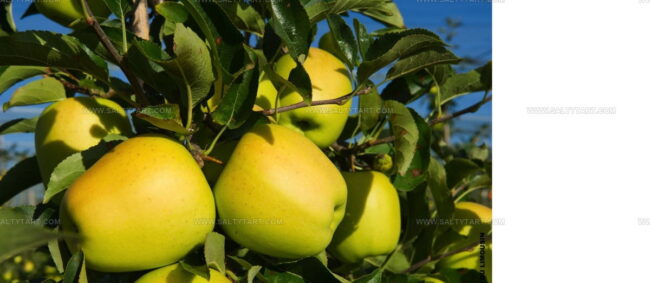
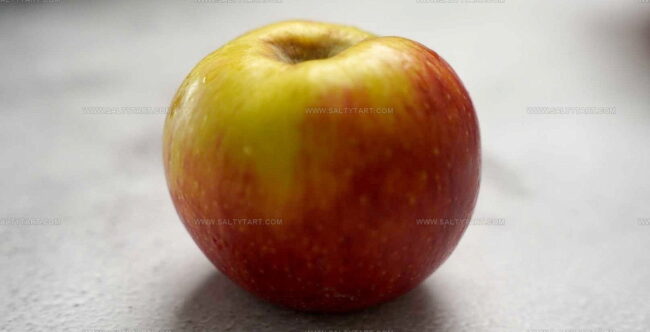
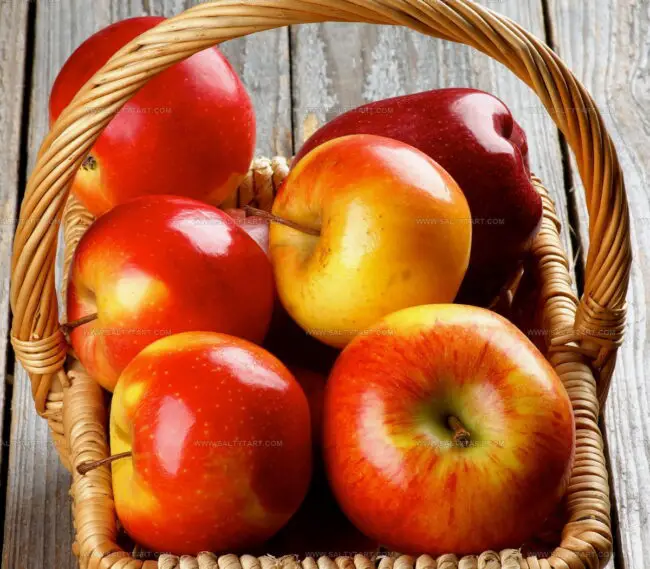
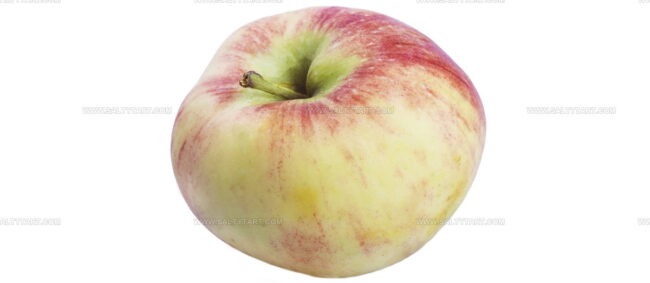
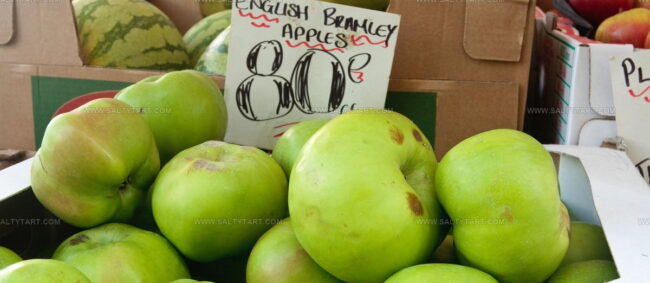
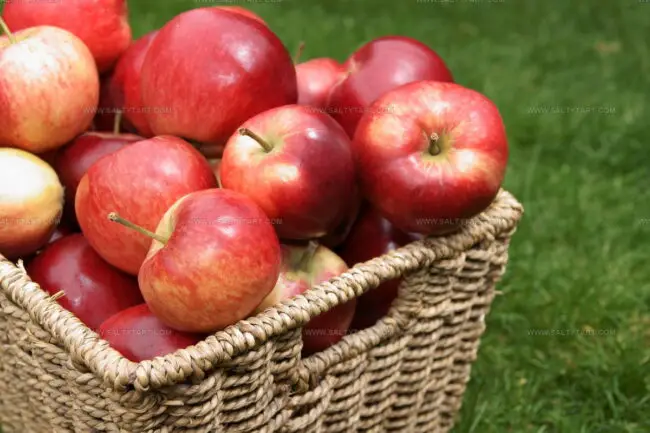
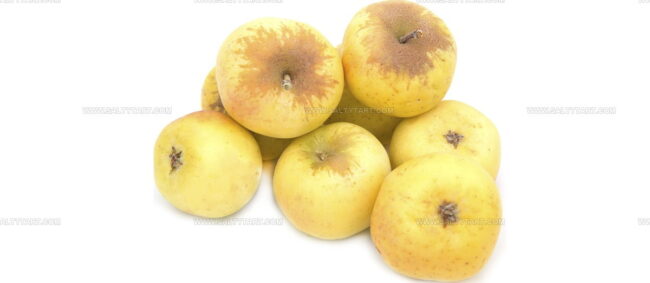
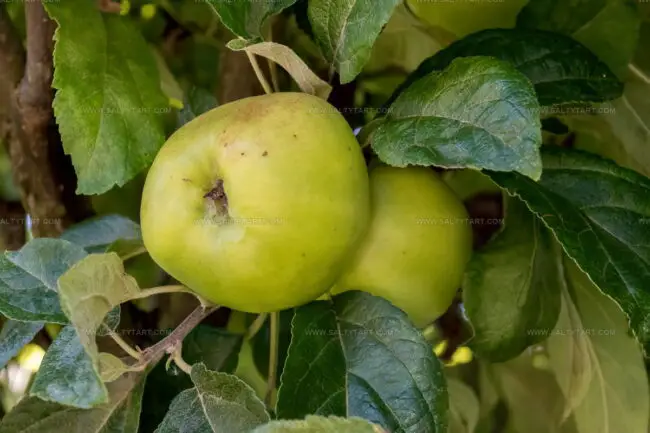
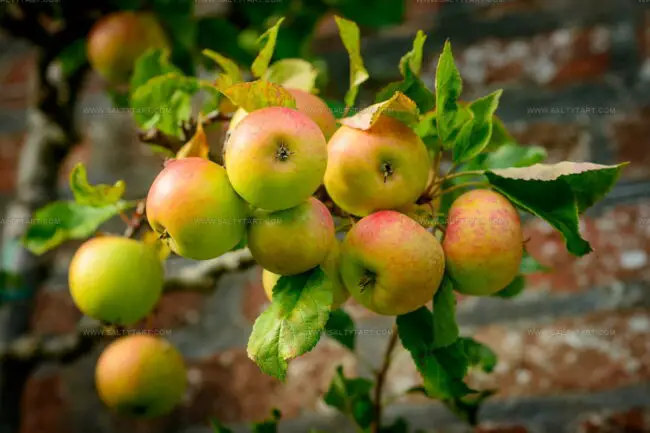

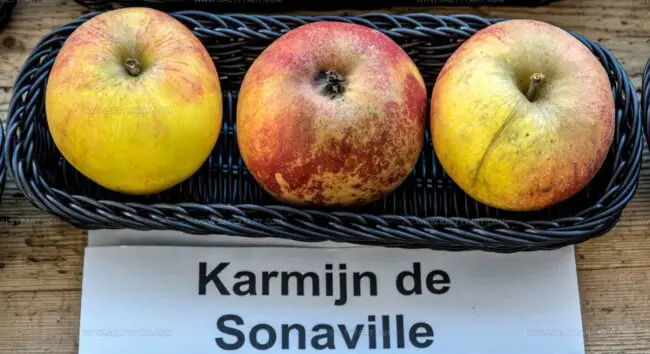
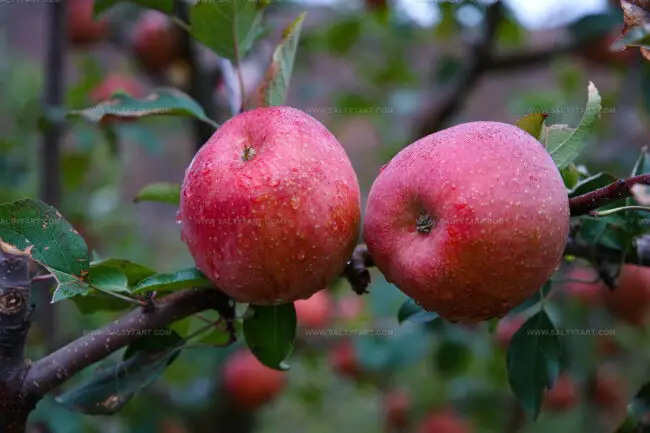
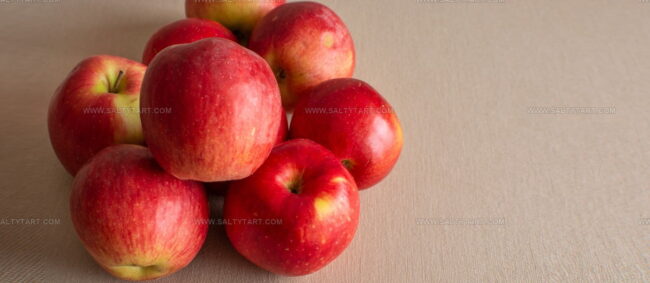


Jess Martinez
Contributing Recipe Writer & Nutrition Consultant
Expertise
Southwestern and Latin American cooking, Nutritional analysis and healthy recipe planning, Cultural food traditions, Modifying traditional dishes for better health
Education
Santa Fe Community College
Certificate in Culinary Arts
Focused on mastering the flavors and cooking methods of traditional Southwestern cuisine.
Jess’s love for bold, homegrown flavors led her straight into the world of Southwestern cooking and cultural nutrition.
After completing her Certificate in Culinary Arts at Santa Fe Community College, she made it her mission to show that good-for-you food can still taste incredible.
At saltytart.com, Jess shares vibrant, health-conscious recipes with roots in tradition but a fresh, modern twist. When she’s not testing new recipes, you’ll find her at local growers’ markets, tending her herb garden, or digging into food history books.